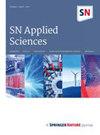Application of sensor technology in grasping and preprocessing of network hotspot information propagation
IF 2.4
Q2 MULTIDISCIPLINARY SCIENCES
引用次数: 0
Abstract
Abstract The rapid dissemination of hot information on the Internet has become a common phenomenon in today's society. Traditional methods of information capture and preprocessing often require a lot of manpower and material resources, and the captured information has low timeliness and accuracy. The purpose of this paper was to use sensor technology to find and locate network hotspots in time. By collecting user generated content, social media data, news reports, etc., the data is analyzed and mined to identify popular topics and events. In terms of information capture, sensor technology can monitor and understand user activities, the popularity of posts, emotional tendencies, user attention, user interaction, etc., through information monitoring. Network data was collected, such as network latency, data loss rate, and bandwidth utilization. Sensor technology was used to collect social media data to understand the level of public attention to hot events. In information preprocessing, sensor technology was used to remove noise and redundant information in data to ensure data quality. The data were labeled and classified, and the information dissemination rules of network hotspot were analyzed in depth. The average capture accuracy of Method 1 for Hotspot 1, Hotspot 2, and Hotspot 3 was 72.11%, 71.81%, and 72.54%, respectively. The average capture accuracy of Method 2 for Hotspot 1, Hotspot 2, and Hotspot 3 was 82.55%, 83.14%, and 82.91%, respectively. When the data was 40, 80, and 120, the preprocessing times of Method 1 for Post 1 were 8.81 s, 15.47 s, and 18.77 s, respectively. The preprocessing times of Method 2 for Post 1 were 5.97 s, 7.80 s, and 9.25 s, respectively. The application of sensor technology in the capture and preprocessing of network hot information dissemination has brought a variety of innovations, including multi-modal data acquisition, real-time monitoring and analysis, user behavior analysis, data cleaning and integration, anomaly detection and early warning, intelligent recommendation and personalized service, etc., thus improving the accuracy, real-time and personalized degree of information acquisition.传感器技术在网络热点信息传播抓取与预处理中的应用
网络热点信息的快速传播已经成为当今社会的普遍现象。传统的信息捕获和预处理方法往往需要大量的人力和物力,捕获的信息时效性和准确性较低。本文的目的是利用传感器技术及时发现和定位网络热点。通过收集用户生成内容、社交媒体数据、新闻报道等,对数据进行分析和挖掘,识别热门话题和事件。在信息捕获方面,传感器技术可以通过信息监测,监测和了解用户的活动、帖子的受欢迎程度、情绪倾向、用户关注、用户互动等情况。收集网络数据,如网络时延、数据丢失率、带宽利用率等。利用传感器技术收集社交媒体数据,了解公众对热点事件的关注程度。在信息预处理中,采用传感器技术去除数据中的噪声和冗余信息,保证数据质量。对数据进行了标记和分类,深入分析了网络热点的信息传播规律。方法1对热点1、热点2和热点3的平均捕获精度分别为72.11%、71.81%和72.54%。方法2对热点1、热点2和热点3的平均捕获准确率分别为82.55%、83.14%和82.91%。当数据为40、80和120时,Method 1对Post 1的预处理时间分别为8.81 s、15.47 s和18.77 s。方法2对Post 1的预处理时间分别为5.97 s、7.80 s和9.25 s。传感器技术在网络热点信息传播捕获与预处理中的应用带来了多种创新,包括多模态数据采集、实时监控与分析、用户行为分析、数据清洗与整合、异常检测与预警、智能推荐和个性化服务等,从而提高了信息采集的准确性、实时性和个性化程度。
本文章由计算机程序翻译,如有差异,请以英文原文为准。
求助全文
约1分钟内获得全文
求助全文

 求助内容:
求助内容: 应助结果提醒方式:
应助结果提醒方式:


